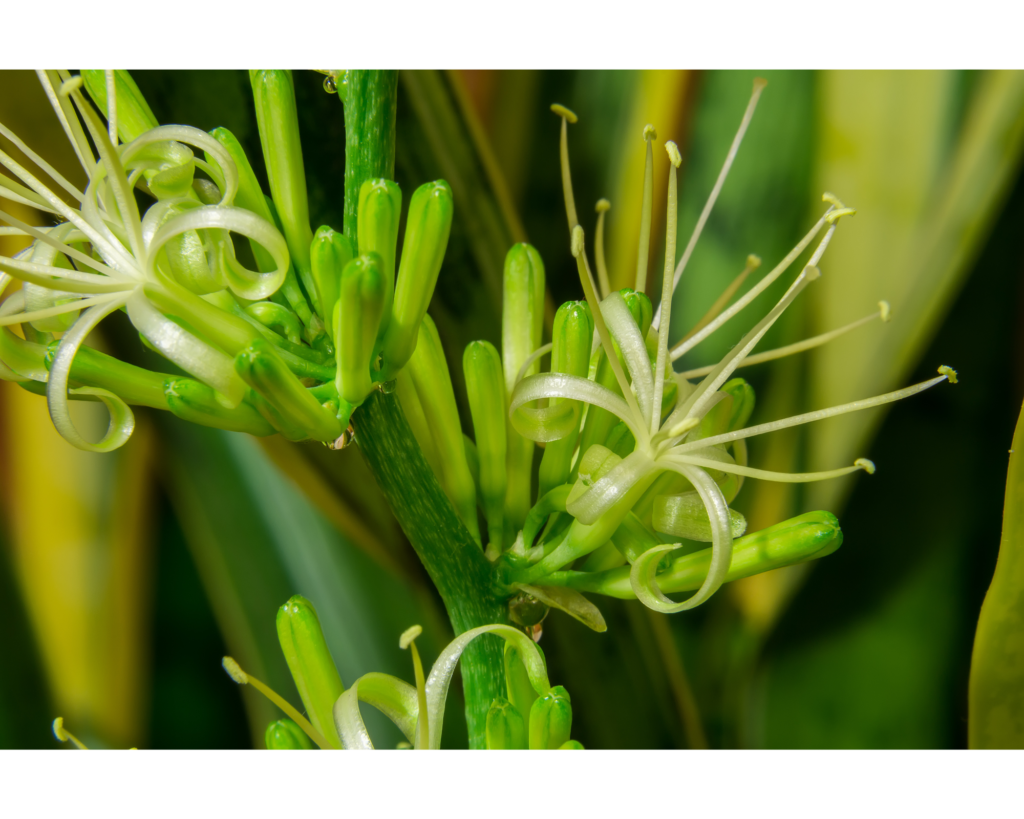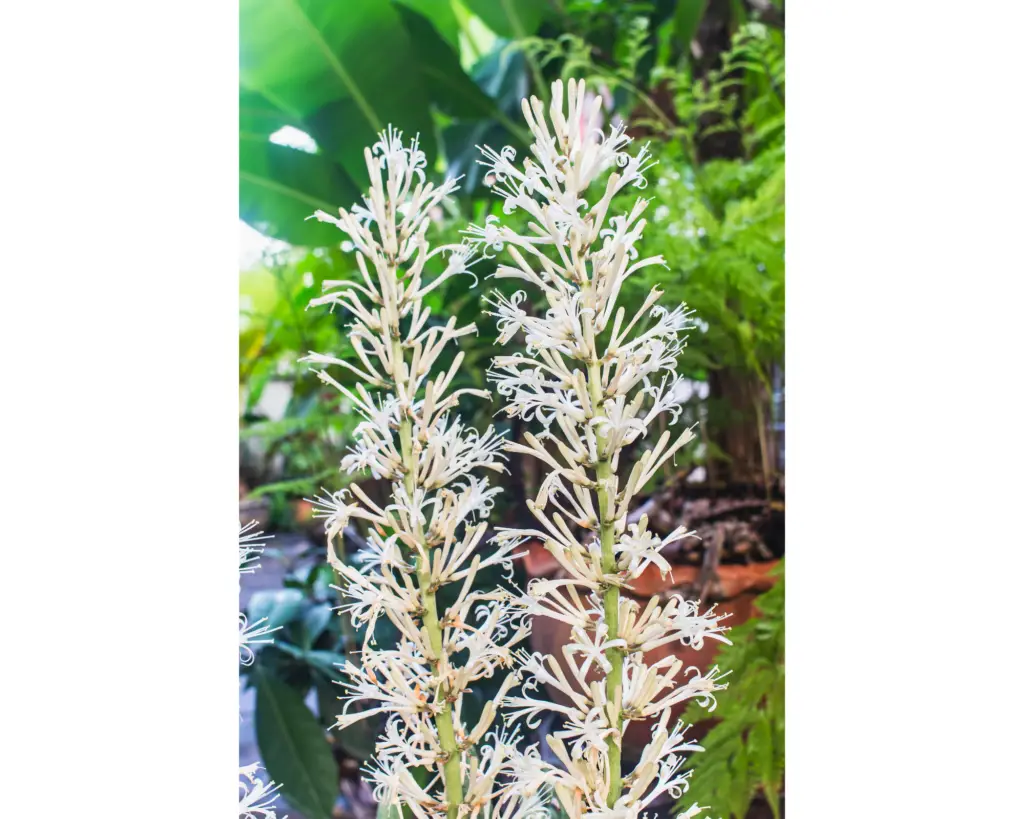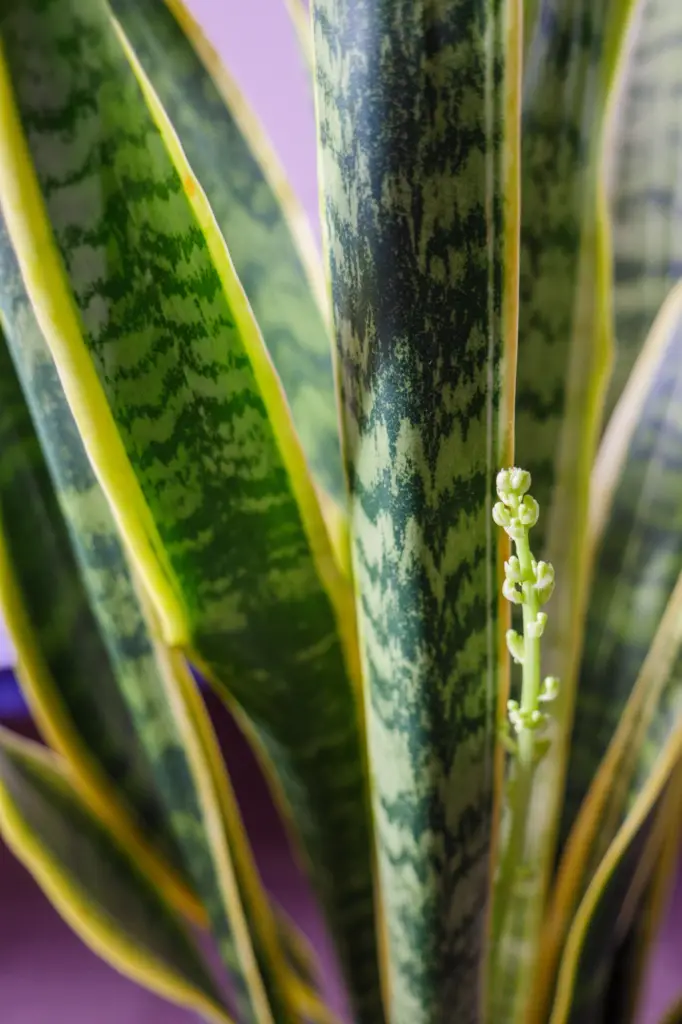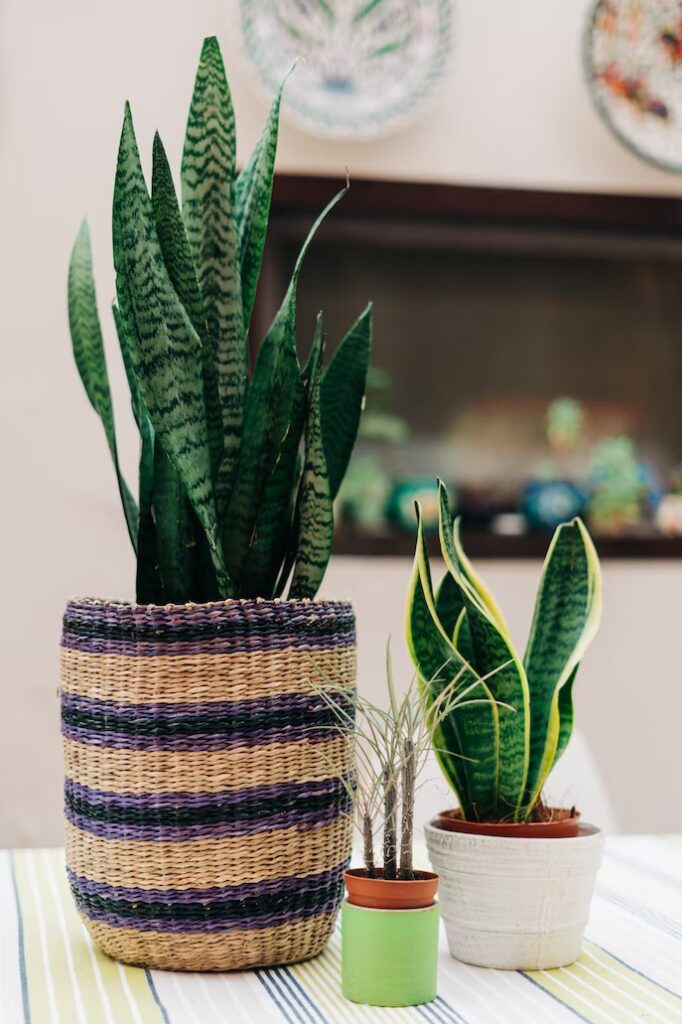Snake plants (Sansevieria species) can produce flowers under certain conditions. However, it is not very common for snake plants to flower when grown indoors as houseplants.
When grown outdoors in their natural habitat, snake plants can produce flowers that are typically small, white, and fragrant. However, the flowers of indoor snake plants are often not very showy, and some species may never flower at all.
To encourage your snake plant to produce flowers, make sure it is getting enough light and is not overwatered. Snake plants prefer bright, indirect light, but can also tolerate low light conditions. Overwatering can cause root rot and may inhibit flowering, so make sure to allow the soil dry between waterings.
Keep in mind that flowering is not the primary reason people grow snake plants. They are primarily grown for their attractive foliage and ease of care as a low-maintenance houseplant.



Table of Contents
How long do these flowers last?
The snake plant flowers typically last for several days to a few weeks, depending on various factors such as its growing conditions, and how well the plant is cared for.
In general, the flowers of snake plants are not long-lasting compared to other flowering plants. They are however still a welcoming sight for many plant enthusiasts, especially since snake plants are primarily grown for their attractive foliage, rather than their flowers.
Once the flowers have faded, you can trim the flower stalk at the base of the plant. This will help redirect the plant’s energy back into growing new leaves and roots.
How to I ensure that my snake plant produces flowers?
It is not guaranteed that your snake plant will produce flowers, however there are some steps you can take to increase the likelihood of flowering. Here are some tips:
- Provide Adequate Lighting: Snake plants require bright, indirect light to thrive, and this is especially important if you want your plant to flower. Place your plant in a spot that receives bright, filtered light for several hours a day. Avoid placing it in direct sunlight as this can scorch the leaves.
- Don’t Overwater: Overwatering can lead to root rot, which can inhibit flowering. Allow the soil to dry out between waterings and avoid letting the plant sit in standing water.
- Give it Enough Space: Make sure your snake plant has enough room to grow. Crowded roots can restrict growth and may prevent the plant from flowering.
- Use Fertiliser: Apply a balanced fertilizer every 2-3 months during the growing season (spring and summer) to provide the plant with the necessary nutrients to support flowering.
- Patience: Remember that snake plants are slow-growing, and it may take several years before your plant produces flowers. Be patient and continue to provide your plant with proper care, and it may surprise you with a beautiful bloom eventually.
Keep in mind that while these tips can help encourage flowering, not all snake plants will produce flowers. Also, some species are more likely to bloom than others.
How do I pollinate snake plant flowers?
If your snake plant has produced flowers, you may want to try pollinating them to produce seeds. Here are the steps to pollinate snake plant flowers:
- Identify the Flowers: Snake plant flowers are usually small and white, and they grow on a long stem that emerges from the center of the plant. The flowers are often grouped together on the stem.
- Locate the Pollen: The male parts of the flower (stamens) contain the pollen. You can identify them by the small, yellow, dust-like particles at the tip of the stamen.
- Collect Pollen: Gently tap the stamen with a soft brush or cotton swab to collect the pollen.
- Transfer Pollen: Take the collected pollen and transfer it to the female parts of the flower (pistil). The female part of the flower is located in the center and has a stigma that is sticky and receptive to the pollen.
- Repeat: Repeat the process of collecting and transferring the pollen to each of the flowers you wish to pollinate.
- Wait: After pollination, the flowers will eventually produce seeds. This can take several weeks to a few months, depending on the species and growing conditions.
Once the seeds have matured and turned brown, you can collect them and plant them to grow new snake plants. Snake plants are slow-growing plants, so it may take several years for the new plants to reach maturity.
Which snake plant types produce flowers?
Several species of snake plant (Sansevieria) are known to produce flowers. However, the flowers of snake plants are not very obvious and are not the primary reason why people grow these plants. Instead, snake plants are grown for their attractive foliage and ease of care as a low-maintenance houseplant.
Here are some common species of snake plant that can produce flowers:
- Sansevieria cylindrica: Also known as the cylindrical snake plant, this species produces small, greenish-white flowers on a long stem that can grow up to several feet tall.
- Sansevieria trifasciata: Also known as the mother-in-law’s tongue or snake plant, this species can produce fragrant, white flowers in the spring or summer under the right conditions.
- Sansevieria ehrenbergii: This species produces small, greenish-white flowers on a long stem that can grow up to 2 feet tall.
- Sansevieria zeylanica: This species can produce small, greenish-white flowers on a long stem that can grow up to 3 feet tall.
Bear in mind that not all snake plants will produce flowers, and the flowers may not appear every year. Instead, enjoy your snake plant for its attractive foliage and low-maintenance care.


Conclusion
Snake plants can produce flowers, but not all species will do so. Its flowers are typically small and not very showy. If you want to encourage your snake plant to flower it requires adequate light, no overwatering, using fertiliser, and having enough space to grow. Please note that these flowers may not appear every year nor be worth the effort of trying to encourage flowering. Regardless of whether your snake plant produces flowers or not, you should enjoy it for its attractive foliage and its ease of being a low-maintenance houseplant.
